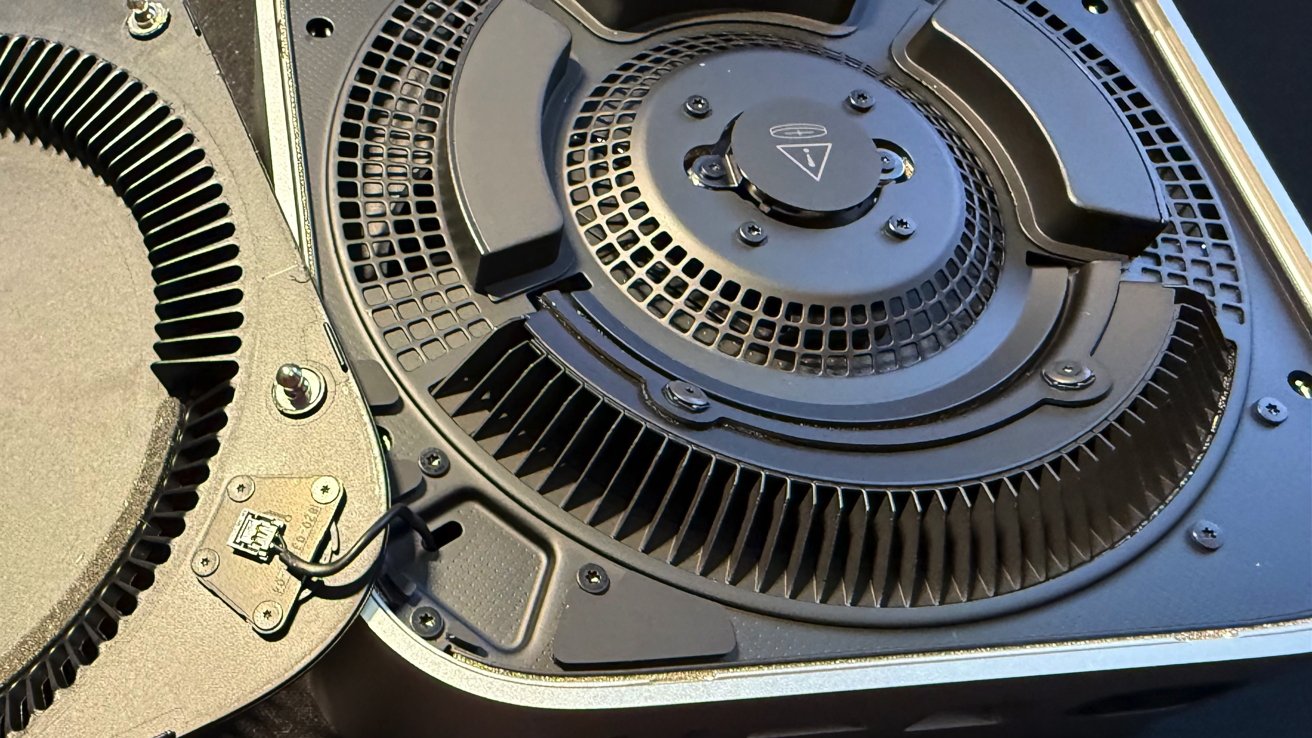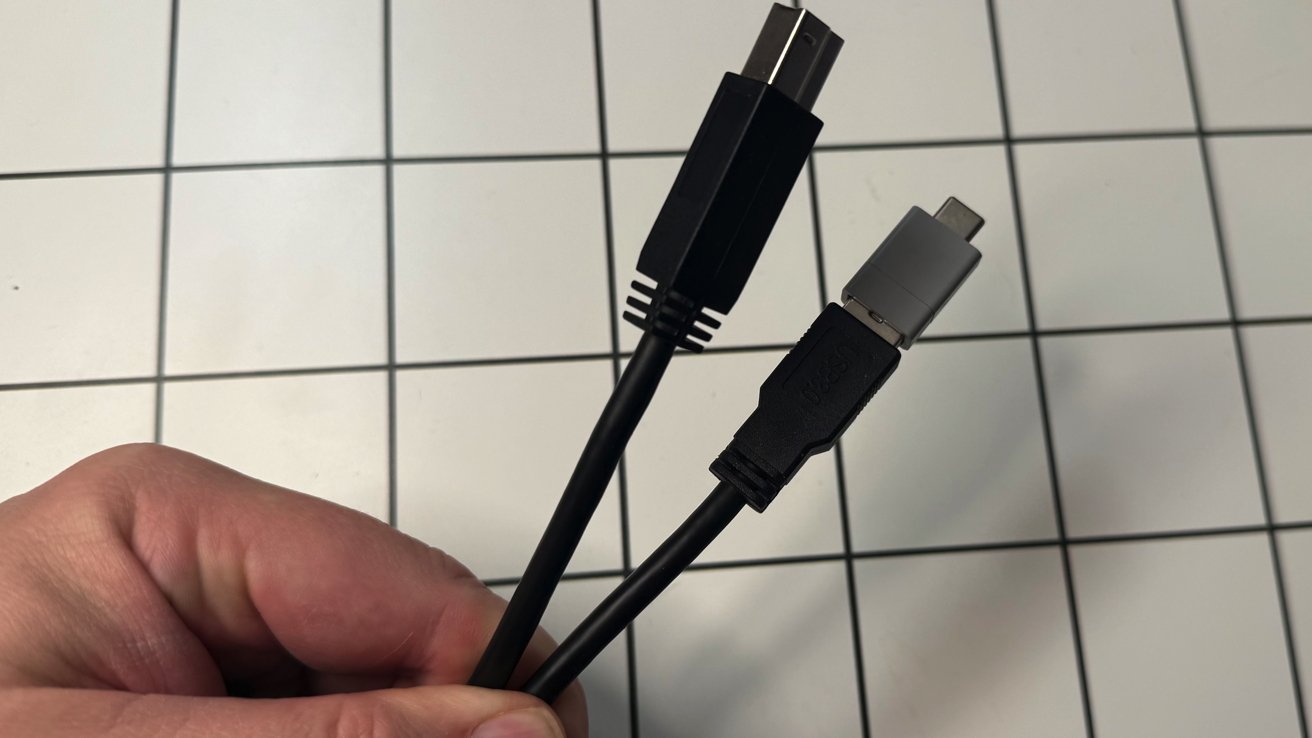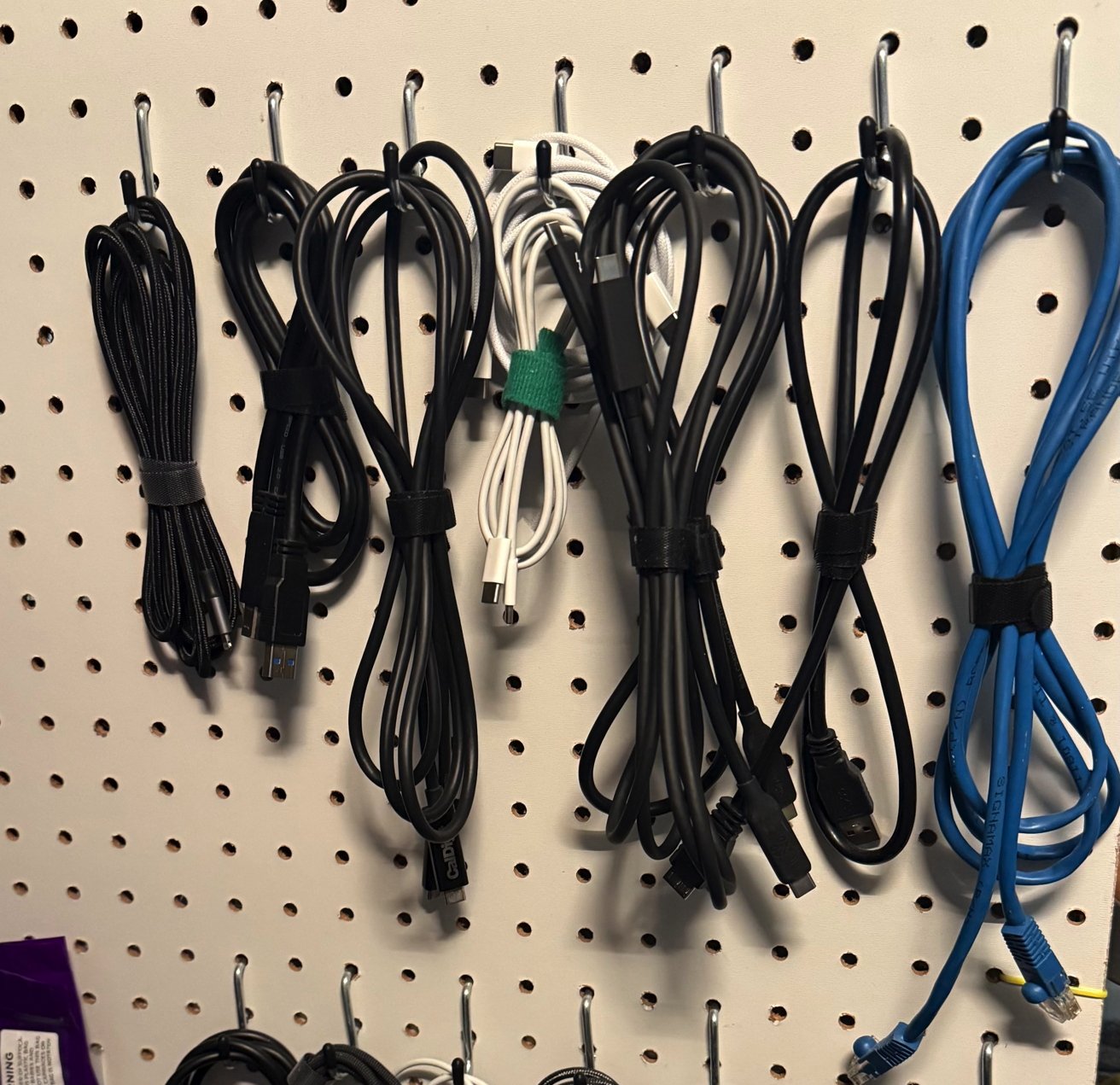How to fix weak Wi-Fi on a M4 Mac mini when connected to a drive or dock
Sporadic reports on social media are talking about how hooking up an external hard drive to a New Mac mini is dramatically cutting Wi-Fi speeds. Here's why it's happening, and how to reduce the impact of it, or stop it entirely.

The new M4 Mac mini Wi-Fi module is marked by that exclamation point
Hours after the new Mac mini hit customers' desks, some users started complaining that when they hooked up a hard drive or SSD to the unit, they'd see Wi-Fi speeds drop, or be cut entirely. The reports were almost always followed up with the realization that when disconnected, the Wi-Fi speeds would go back to normal.
I've been looking into this for a few months, since I did the first reviews of the hardware here at AppleInsider. While there are an incredible amount of variables, I can confirm that I've seen this.
But, it's not every drive, dock, or cable that induces the problem.
Let's look at why Wi-Fi speeds can be hit by attaching something like a hard drive, and what you can do about it.
What can cause Wi-Fi signal strength drops
While I'm not going to get into the physics of it, or too much into the inverse square law, Wi-Fi, like any form of electromagnetic radiation can reduce in strength -- or be attenuated -- between the transmitter, and the recipient. In this case, the Wi-Fi base station, and the new M4 Mac mini.
Normally, the main attenuator is building materials. As a general rule, the denser the material, the more attenuation. Folks with very old plaster lath walls, for instance, or cinder block construction, have more issues with attenuation than plywood and drywall.
Another factor is wavelength. For the most part, the 2.4 gigahertz band on a Wi-Fi router is less impacted by materials, with the 5 gigahertz band hit more.
And, RF interference can cause a problem too. This is the disruption of radio signals by other electronic devices emitting electromagnetic radiation in the same frequency range as the broadcast. This is the main factor why, back in the day, some baby monitors would crackle badly when near an early Wi-Fi router, or why a wireless house phone would sometimes knock a base station off the air entirely.
And, RF interference is why you should avoid putting a Wi-Fi router near a microwave oven.
What we're dealing with in the case of the Wi-Fi speed drops with a drive attached to a M4 Mac mini is a combination of Apple's design, materials, and RF interference.
Apple and peripheral design
The case of the M4 Mac mini is aluminum, with a plastic lower case. There are no breaks in the aluminum for the Wi-Fi antenna, so Apple has placed it underneath that very thin plastic base of the unit.
For the most part, this is fine. The desks and surfaces a Mac mini are generally placed on are wood, which has nearly no Wi-Fi attenuation.
Since that plastic is so thin on the base, things get a little dicier when the unit is placed on top of a metal-enclosure hard drive, or dock, for instance.
After a month of testing the first arrivals, mostly iffy brands cranked out quickly after release, putting the Mac mini on top of a dock cuts the power of the Wi-Fi received by the unit dramatically, with the impact mostly varying based on how much metal surrounds the Wi-Fi module, or is in close proximity.
A number of docks are about to ship after the 2025 Chinese New Year, and AppleInsider as a whole will be looking at this more as we go. Our dock reviews will address Wi-Fi attenuation.
A shorter-term solution for any of these docks is to not put them underneath the Mac mini. They fit just as well on top of the unit as they do the bottom.
Mac mini RF interference with low quality cabling
This has been trickier to test. Initially, I didn't have any problems at all with Wi-Fi attenuation when just plugging in a cable.
Ultimately I found a combination of an off-brand USB-A to USB-B cable, paired with an inexpensive USB-C to female USB-A adapter that could cause the problem. It didn't matter which enclosure I used -- when paired with the cursed cable combo, I could reliably get Wi-Fi signal attenuation when in use.

The cursed cable combo in question. Note the gap between the adapter and cable plastic body
I also tried this same cable combo on a M2 Mac mini and a Mac Studio. Both had Wi-Fi attenuation with the adapter and cable.
But, both were less impacted than the new Mac mini is, though. This is likely because of a combination of the Wi-Fi module on both being farther away and thicker case materials.
A similar problem manifested on an Asus NUC that I tried it on. The interference also happened on a PC tower that I have for gaming, but less because the cable was plugged in much farther away from the Wi-Fi antenna than possible on the Mac mini.
I talked about the inverse-square law above. The backside of the inverse square law is that the further away you can put a source of interference from a RF transmitter, the less interference you'll get.
This practically manifests in the cable combo's lesser interference with the PC tower, and the Asus NUC, since the Wi-Fi antenna in both cases was farther away from the source of that RF interference.
So, this is a clear case of RF interference generated by the cable combo. It was exacerbated by putting the Mac mini on top of the metal hard drive enclosure, adding material attenuation to the problem.
How to stop getting Wi-Fi signal cuts on the M4 Mac mini
In my previous lifetime working in part as exposure control on a US Navy submarine, there was a mantra we spoke about it: Time, distance, shielding.
The first term, time, doesn't apply so much here. This was about minimizing personnel exposure times when it was necessary to be exposed to ionizing or RF radiation.
Distance matters here, though. We don't want to reduce exposure, here, we want to increase it. So, in the case of the hard drive enclosure, or dock cutting Wi-Fi strength, keeping a distance, sometimes only millimeters, from the potential shield makes all the difference in the world.
Distance isn't really changeable in the case of the cursed cable combination. That connection has to be close, given the nature of USB.
What's changeable here is the shielding on the cable.
I am frequently mocked for my cable walls in the house. I have two pegboards holding daily-use cables for this job, and a standby bucket.

A sample of one of the cable walls
When I haven't used a cable in a while, it gets bound up with a velcro tie and put in that bucket with a date for purging at some point down the line.
Cables on that wall and in that bucket vary in quality. Sometimes, the cables that are included with a drive or peripheral aren't the greatest.
For example, the USB-A to USB-C adapter I used for the bad cable that I fished from the bottom of that bucket came from a peripheral. The USB-A to USB-B cable is about four years old, and came from a drive that I shucked to put in my storage array.
Put simply, inexpensive cables aren't always your best bet here. Adapters also add another potential point of failure. In this case, they specifically add another possibility for poor shielding to cause a problem.
The wall also holds cables ranging from just-charging to higher-quality Thunderbolt 3, Thunderbolt 4, and USB4 cables. In every case, I was able to eliminate the impact of the cursed cable combo by simply not using it, and using a USB4 or Thunderbolt cable.
Do you have Lego in the house? In a pinch, lift the Mac mini off of a metal enclosure with a single plate to get some distance between the metal and the Wi-Fi module. Or, just keep them side-by-side, instead of in a stack.
Not a flaw in the Mac mini -- but it could have been better
There doesn't appear to be a hardware design flaw, or a software issue, with the new Mac mini causing the Wi-Fi problems when connected to a drive. Arguably, Apple could have shielded the USB-C cable penetrations slightly better, but every design of anything, everywhere, is a series of compromises.
Thinner and smaller designs, like the M4 mini redesign, mean that there is less metal to shield the unit from RF. It also means that the components are in closer proximity than they've been in before, aggravating the impact of sources of interference.
Sometimes, millimeter-separation makes all the difference in the world when you're talking about material shielding, or RF interference. That's the main takeaway here.
Better cables mean better shielding. Moving a metal-cased enclosure away from the RF module on the bottom center of the case helps too.
Combine the two, and your problem is probably solved.
Read on AppleInsider




Comments
As a general rule, avoid cables for data that are made by a brand with too many adjacent consonants to pronounce.
As far as identifying USB cables that are much less likely to cause EMI/EMC interference look for cables that are "USB-IF Certified." A quick search on Amazon will identify brands that provide USB-IF certified cables. Another thing to look for are cables with shielding and cables that use twisted pairs of wires instead of parallel (or flat) cables.
If you want to measure things like RF leakage with cables you'll need a RF spectrum analyzer like the Osmium WiPry 2500x. These analyzers are very expensive, even the lower priced ones are in the $500-$800 range. And if you're really picky about these sorts of things you'll need an RF anechoic test chamber. Not cheap and not something you'd expect the AppleInsider folks to tackle.
Also, if one were really clever, once could experiment with creating a little mini, concave RF reflector out of aluminum foil, to effectively make the Mac's wifi antenna more directional. While making a little pedestal out of Legos the curved strip of foil could be placed under the computer vertically, behind the wifi antenna, and directed towards the wifi router. I can't imagine it would help much, but since the author already has an RF meter, it might be worth the experiment.
I would think a fair portion of buyers are placing the mini on the aluminum base of the Studio Display. Does that cause problems?
is connected with 10Gb ethernet. WiFi has to be on for Airdrop to work.
My M4 Pro Mini is sitting on top of my metal OWC raid case with WiFi on and 10Gb ethernet connection. It is about six feet away and in sight of the same router.
Thus I have not noticed any attenuation.
At the big box stores, one can buy three 1.135" or 1.250" (exact diameter slips my mind) diameter by about .25" wood discs which would elevate a mini for both better cooling and WiFi reception if it is placed on a Studio Display base. Discs can found in one of the multi drawer cabinets in the hardware area. I have used these disc for many years with stacking the original several inch thick Mac mini computers for my server operation at home